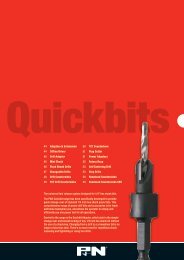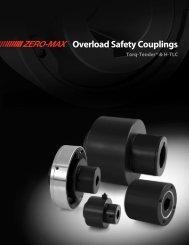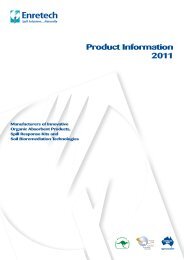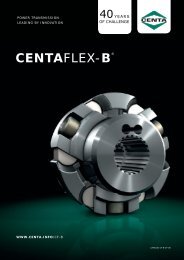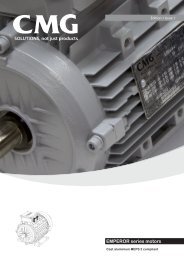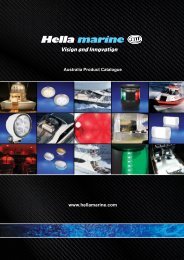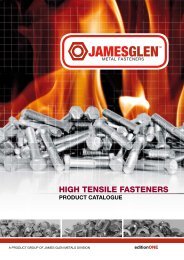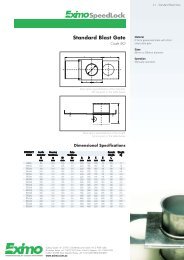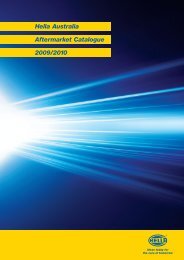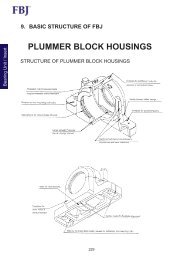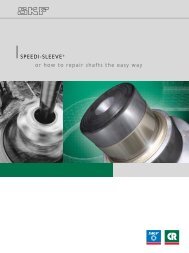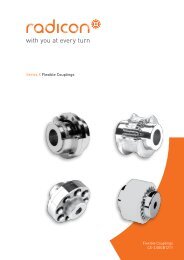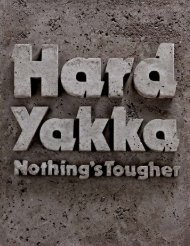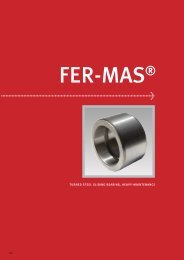Tol-O-Matic System Compatibility - Industrial and Bearing Supplies
Tol-O-Matic System Compatibility - Industrial and Bearing Supplies
Tol-O-Matic System Compatibility - Industrial and Bearing Supplies
You also want an ePaper? Increase the reach of your titles
YUMPU automatically turns print PDFs into web optimized ePapers that Google loves.
ENGINEERING RESOURCES<br />
SIZING AND SELECTION LIMITING FACTORS<br />
Torque Margin<br />
The following torque margins are recommended:<br />
Stepper = 2.0<br />
Brushless Servo = 1.15<br />
Brushed DC Servo = 1.15<br />
Inertia Match<br />
For best efficiency <strong>and</strong> dynamic performance:<br />
1≤<br />
J REF<br />
J MOTOR<br />
≤10<br />
Critical Speed<br />
Critical speed for a given length of a given diameter screw in a<br />
given bearing system is that rotational speed at which the screw<br />
will have a natural frequency of oscillation about its own axis.<br />
Curves of critical speed versus length are provided for each screw<br />
diameter in the screw drive actuator section of this catalog.<br />
Screw/Nut Thrust Capacity<br />
Screw nut thrust capacity is the axial load which the screw <strong>and</strong> nut<br />
can deliver to the carrier. This force is limited by the interaction of<br />
the screw <strong>and</strong> nut threads for a solid nut <strong>and</strong> by the rolling<br />
ball/thread system of the ball screw/nut. In the <strong>Tol</strong>-O-<strong>Matic</strong> actuator<br />
design, all axial load is supported by the screw in tension<br />
against the thrust bearings.<br />
For solid nut actuators, maximum thrust <strong>and</strong> speed ratings are<br />
shown on the critical speed charts. Because of thermal considerations,<br />
the axial thrust to be provided by a solid nut at any operating<br />
speed must be limited such that:<br />
Thrust<br />
Speed<br />
X ≤ 0.1<br />
Max. Thrust Rating Max. Speed Rating<br />
Belt Rating<br />
For belt actuators, the required thrust must be less than the belt rating<br />
at the operating speed. These limits are shown in the belt actuator<br />
section of this catalog.<br />
Backlash<br />
Defined as the linear distance which is lost in positioning the nut<br />
when the screw direction of rotation changes. Backlash is directly<br />
related to the closeness of fit between the nut <strong>and</strong> screw.<br />
SOLID<br />
BALL<br />
NUT<br />
Anti-<br />
Low<br />
Single<br />
Single<br />
Backlash<br />
Backlash<br />
Backlash (in.) 0.007 0.003 0.015 0.002<br />
Backlash (mm) 0.18 0.08 0.25 0.05<br />
Designation SN SNA BN BNL<br />
RMS Torque<br />
The RMS torque must be less than the motor’s continuous torque<br />
rating.<br />
SPEED<br />
t 1<br />
t 2<br />
t 3<br />
t 4<br />
t 5<br />
Torques are: T1,T2, T3, T4, T5<br />
RMS Torque =<br />
TIME<br />
+ + + +<br />
+ + + +<br />
Higher ratios can be used if the duty cycle is modest. Consult the<br />
factory for guidance.<br />
For ball screw/nut actuators, the thrust ratings shown on the critical<br />
speed charts represent the thrust at which a screw/nut life of 10 6<br />
inches (25 x 10 6 millimeters) can be expected. For other loads, life is<br />
given by:<br />
( )<br />
10<br />
Rated Thrust<br />
3<br />
Life = X 10 6 inches<br />
Nut Load Thrust<br />
148



